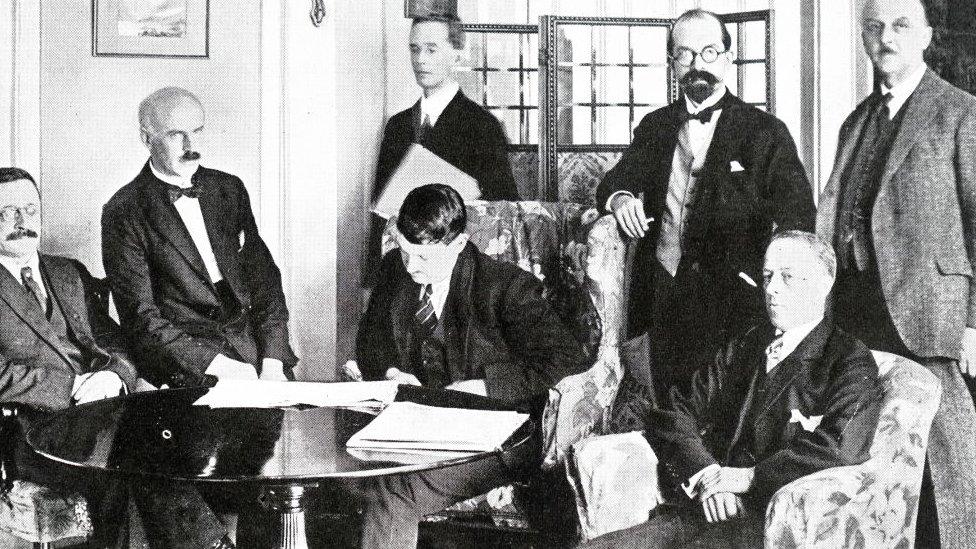How civil war erupted at the Irish Four Courts 100 years ago
- Published
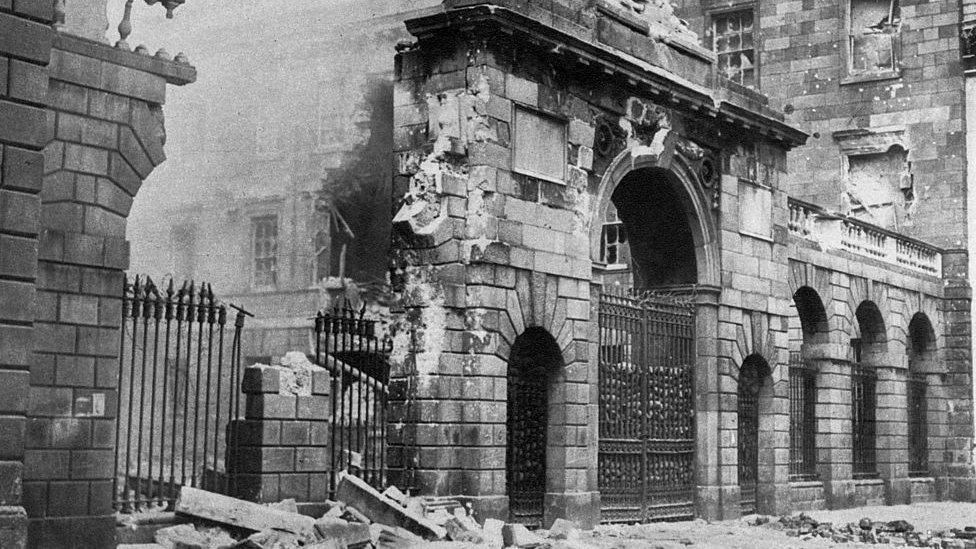
The bombardment of the Four Courts marked the beginning of the Irish Civil War
The Irish civil war broke out 100 years ago with the eruption of violence in central Dublin.
A split among republicans over the Anglo-Irish Treaty, signed with the London government six months earlier, led to fighting within Ireland.
On 28 June 1922 the dispute came to a head at Dublin's judicial headquarters, known as the Four Courts.
Forces opposed to the treaty had occupied the building two months previously.
After a tense stand-off, pro-treaty forces were ordered to attack the Four Courts by the newly-created provisional Irish government.
It was the starting point of a civil war which was to last almost a year and lead to hundreds of deaths including that of Michael Collins.
He was the chairman of the provisional government and had led the Irish Republican Army (IRA) through the war of independence against Britain from 1919 to 1921.
He was part of the Irish delegation which signed the peace treaty with London in December 1921.
The agreement led to the creation of a self-governing Irish Free State.
Opponents of the treaty, led by Éamon de Valera, felt it did not go far enough. It did not end the partition of Ireland, and, crucially, it did not offer complete independence.
Instead, it kept Ireland within the British Empire with an oath of allegiance to the king.
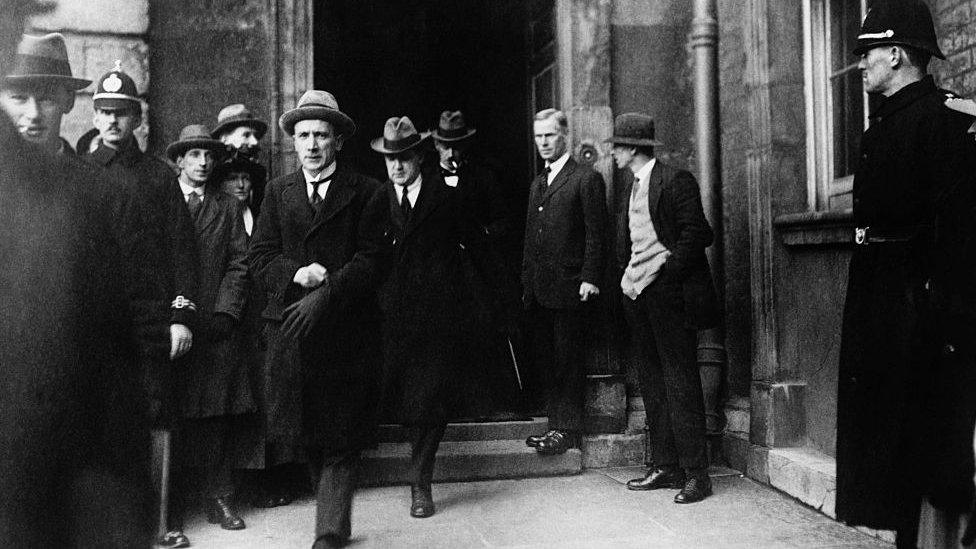
Michael Collins (second in line) arrives at Dublin Castle for the handover of power
Supporters of the treaty were led by Michael Collins and Arthur Griffith, founder of Sinn Féin.
They argued that it significantly loosened ties with Britain and offered a pathway to full independence and the re-unification of Ireland.
The extent of the division with republicans was clear in January 1922 when the treaty was put to a vote.
It was passed by just seven votes - 64 to 57 - in the Dublin parliament, Dáil Éireann.
Within six months the dispute had descended into violence. So had a civil war been inevitable?
The historian, Prof Marie Coleman, argues that it was not.
"It wasn't inevitable when the Dáil split on the treaty in January 1922 because it was only a political split at that time," she said.
"Between January and June of 1922 that split spread, and particularly it spread to the IRA.
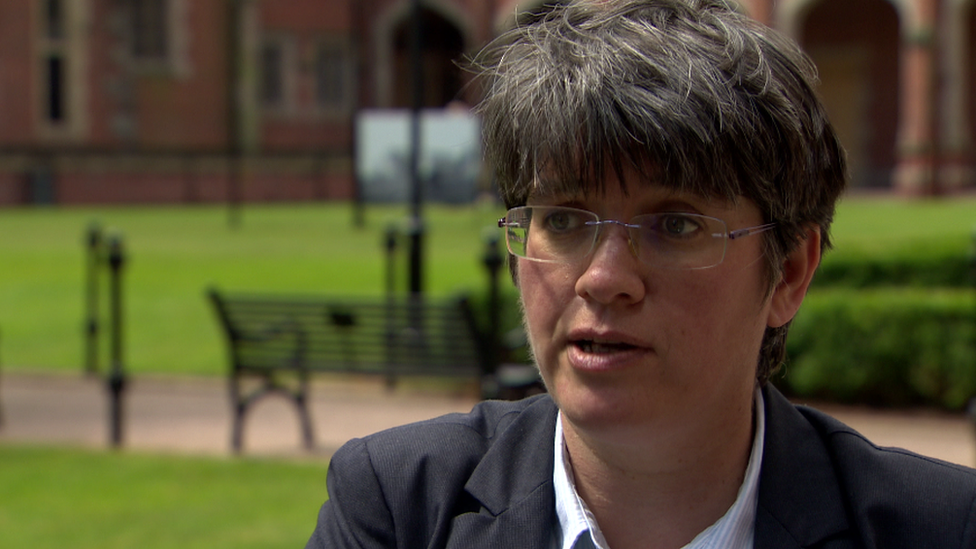
Historian Prof Marie Coleman says it is estimated that in excess of 1,000 people died
"Once the IRA split and you had two opposing military factions, then some sort of military confrontation became at least more likely, if not inevitable."
The war ended in May 1923, as the pro-treaty forces overcame their rivals.
"The best estimate we have is that in excess of 1,000 people died," says Prof Coleman.
"That's counting soldiers of the Irish Free State army, the anti-treaty IRA and also civilians, including some politicians who were targeted."
The most high-profile killing was the shooting of Michael Collins in County Cork in August 1922.
It was the death of another politician, the Ulster Unionist MP Sir Henry Wilson, which was one of the incidents which triggered the civil war in June 1922.
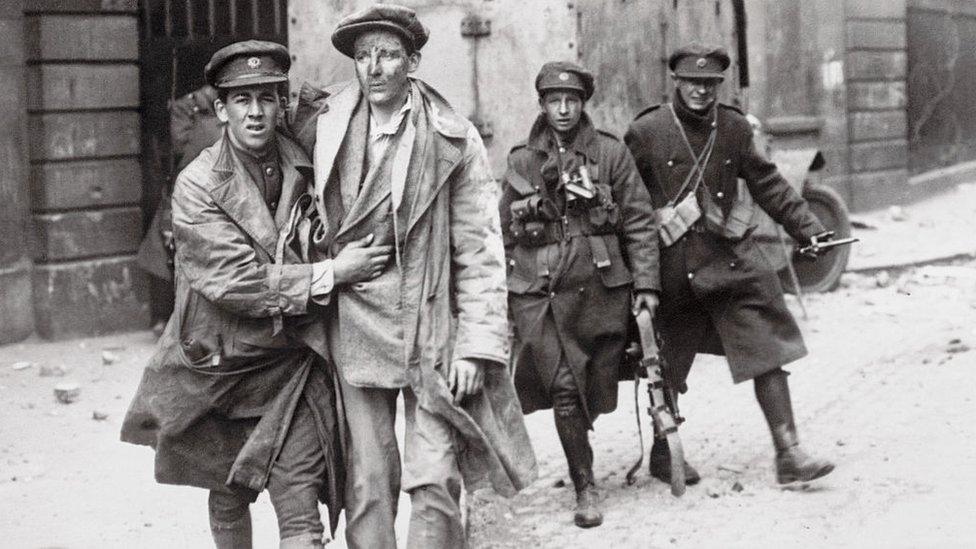
A National Army soldier brings a wounded anti-treaty fighter out of the Four Courts
He was killed by two IRA gunmen in London.
The London government blamed the shooting on anti-treaty republicans and put pressure on the Irish provisional government to end the Four Courts takeover.
Within days, the military operation to take back control had been successful, but months of violence in Dublin and other places ensued.
The treaty did not just split politicians and the IRA, but in some cases families were divided.
Even after the conflict ended, the civil war defined politics in Ireland with the emergence of opposing political parties reflecting the division over the treaty.
Fianna Fáil emerged out of the anti-treaty faction and was founded by Éamon de Valera.
Fine Gael became the main political home for those who had been in favour of the treaty.
In what was seen as the end of so-called civil war politics, Fianna Fáil and Fine Gael agreed to share power in 2020 for the first time.
Although the treaty which led to the civil war was signed in December 1921, it did not come into force until a year later, when the new 26-county Irish Free State was formally established.
The unionist-controlled government in Northern Ireland had the option of joining the new state but chose not to do so.
A boundary commission was set up to re-examine the Irish border but ultimately no changes were made.
The border created in 1921 is the same now as it was then.
You can find out much more about the partition of the island of Ireland in 1921 by listening back to the BBC podcast series, Year '21, on BBC Sounds.
Related topics
- Published28 June 2022
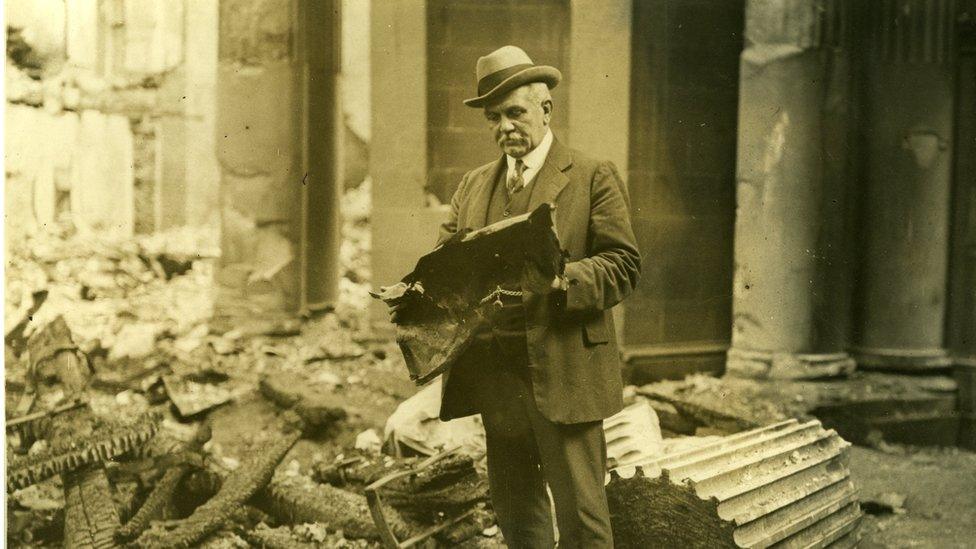
- Published1 January 2022

- Published6 December 2021
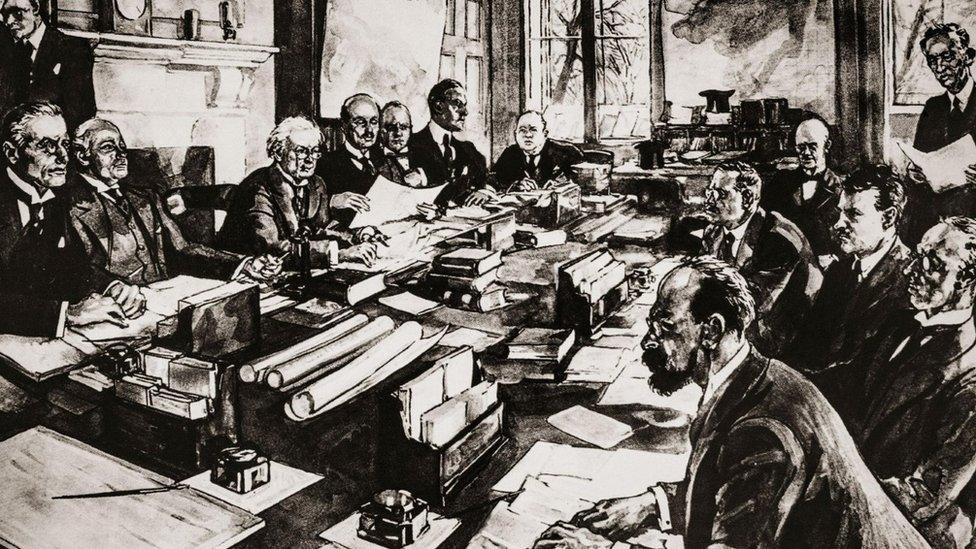
- Published6 December 2021
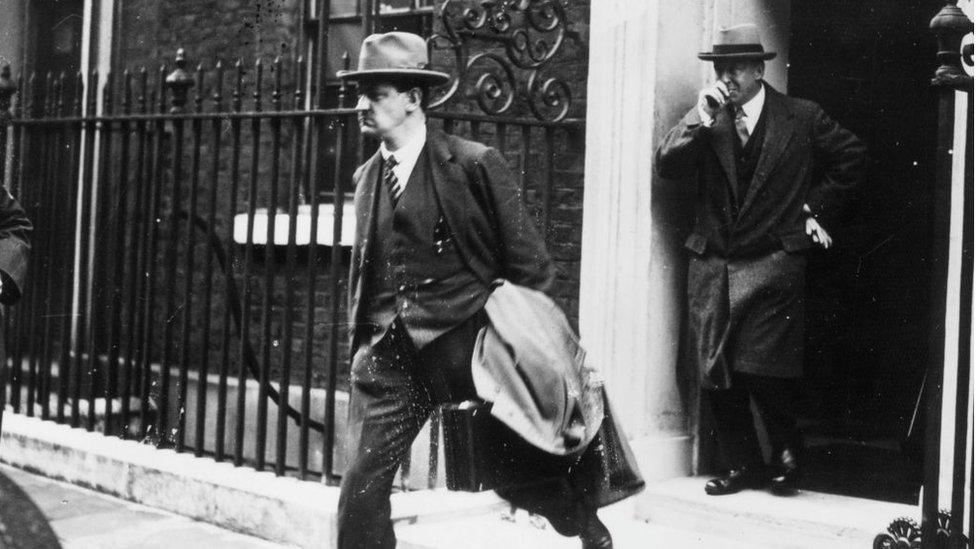
- Published6 December 2021
